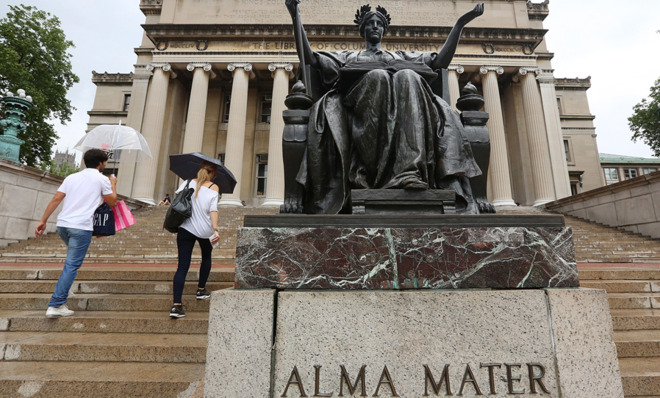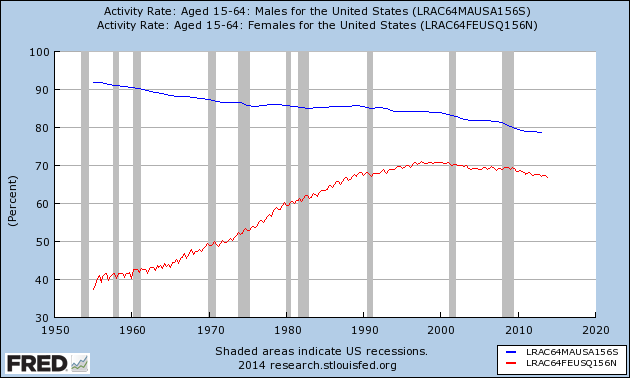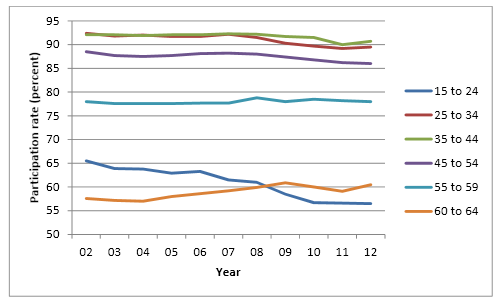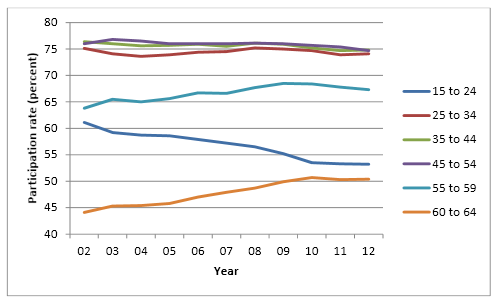The real reason for America's falling labor participation rate
It’s not laziness, or workers giving up looking for work

In recent years, a lot of attention has been given to the fact that America’s labor participation is falling. For men, it has been dropping for most of the last half-century, as more women have come into the labor force. But the rate has begun to dip for women, too:

[Federal Reserve Bank of St. Louis]
The usual explanation is that the long-term unemployed are giving up looking for work, a possible sign of deep weakness in the labor market that is partially masked by headline unemployment figures that don't count such workers.
The Week
Escape your echo chamber. Get the facts behind the news, plus analysis from multiple perspectives.

Sign up for The Week's Free Newsletters
From our morning news briefing to a weekly Good News Newsletter, get the best of The Week delivered directly to your inbox.
From our morning news briefing to a weekly Good News Newsletter, get the best of The Week delivered directly to your inbox.
But digging deeper into the data, it becomes clear that those who have given up the job search — who are often referred to as discouraged workers — are relatively few. The unemployment rate including discouraged workers is just 7.5 percent, a single percentage point above the headline rate of unemployment. So discouraged workers make up just 1 percent of the potential labor force.
That obviously isn’t good — that's still a lot of workers who have dropped out after months or years of trying to find employment. But it’s not enough to explain the bigger decline in labor force participation.
How about large numbers of baby boomers retiring before they hit 65? Are they pushing down the labor force participation rate? Research by Alicia Munnell, director of the Center for Retirement Research at Boston College, argues that the falling participation rate is a long-term decline due to demographic changes. And in a recent speech, the Federal Reserve’s James Bullard appeared to support this argument.
But as Patrick Artus and Frances Coppola argue, the data doesn’t really support this theory either.
A free daily email with the biggest news stories of the day – and the best features from TheWeek.com
Here is the male participation rate by age group. As you can see, the proportion of workers ages 60 to 64 is rising. The group showing the biggest decline? The 15-to-24-year-old bracket:

And exactly the same is true for females:

Excluding 15-to-24-year-olds, labor participation rates for both men and women were pretty flat over the last decade.
So it’s the young who are working less. But why? Is it because they are a bunch of lazy good-for-nothing slackers who are standing around on street corners — or in line to collect welfare — blasting (and twerking to) loud music and puffing on marijuana? Is this what the Pajama Boys of this world have come to?
I don’t think so. The best explanation for the change is that young people are staying in school for longer periods of time. According to the National Center for Education’s report The Condition of Education 2012, participation in education and training has risen hugely, particularly among young adults. Between 1970 and 2010, the overall education enrollment rate for young adults ages 18 to 19 increased to 69 percent, from 48 percent. Between 1970 and 2010, the enrollment rate for adults ages 20 to 24 climbed to 39 percent, from 22 percent, with most of that gain coming between 2000 and 2010, when the enrollment rate for adults ages 20 to 24 increased to 39 percent, from 32 percent.
That is not to say that individuals are no longer dropping out of the labor force because they can't find a job (or because they prefer to blast loud music and start their own Choom Gangs, etc). But those factors are tiny compared to young people spending many more years in education and training.
John Aziz is the economics and business correspondent at TheWeek.com. He is also an associate editor at Pieria.co.uk. Previously his work has appeared on Business Insider, Zero Hedge, and Noahpinion.


